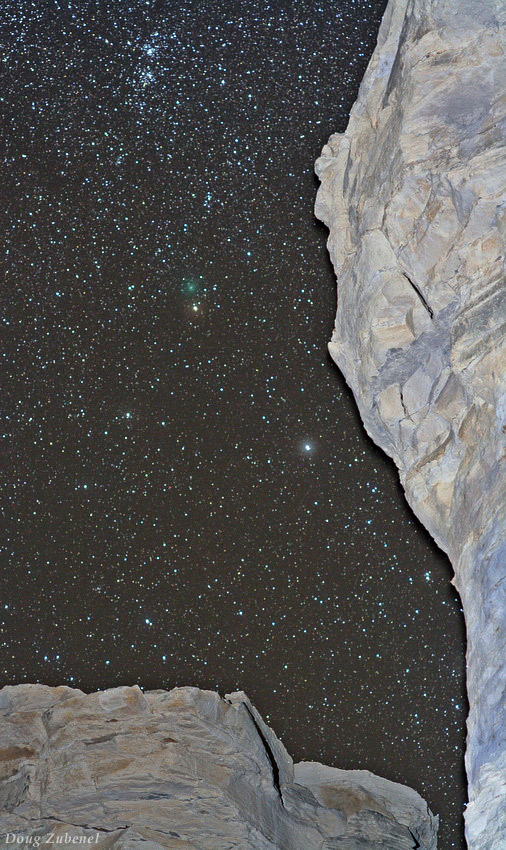Comet over Monument Rocks
Description
Out in western Kansas you will find rising from the high prairie plain the Monument Rocks. Laid down at the bottom of the ancient sea that once covered this region ~ 80,000,000 years ago, they were thrust up along with the Rocky Mountains, and erosion washed away the looser sedimentary layers, leaving these stunning outcroppings of chalk. From the photographer, “I went out to the Monument Rocks to image Comet 103P/Hartley 2 above them on October 8th, as the comet was passing the famed Double Cluster in Perseus. Poor weather prevented making the image until the next night, yet created a different and pleasing composition with the clusters, and Eta Persei. Very thin high clouds created small aureoles around the brighter stars.”
Info
Share

comments (2)
A beautiful shot, but the blackened edge of the rocks on the right makes me question if they were added later.
November 25, 2010 at 10:56 amIn response to Rich’s question, this image – as well as all of my images – is a single exposure. First, the rocks were focused upon @ f/16, the shutter opened and the rocks illuminated with an electronic flash. Then, with the shutter still open, the lens was refocused to infinity and opened up to f/2.8 for the remainder of the exposure (about 2 minutes) at ISO 800. The blackened edge to the rocks is due to the slight shift of the foreground during the tracked exposure. If I had used the flash at the end of the exposure, the rocks at bottom would have had the black edge. I have been using this technique since creating it back in 1982.
November 25, 2010 at 5:12 pm